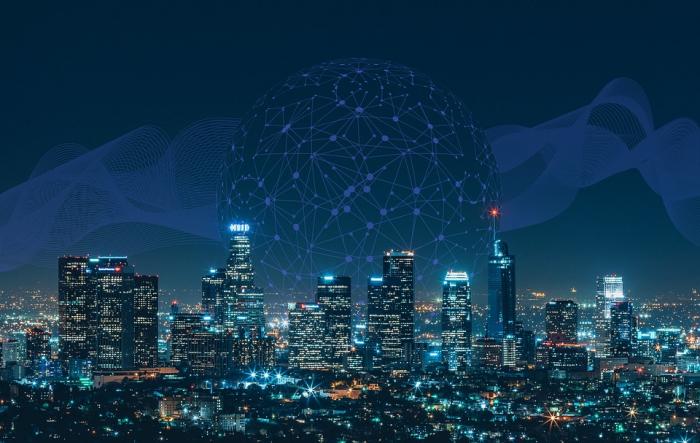
10 things you didn’t know you should look to Space to solve for your City
Most cities are already using space technology – yet many don’t realise it. Here are 10 opportunities for cities to response better, faster and cheaper using SpaceTech, and indeed do things that were not possible before. This helps city decision makers in support of planning, resilience, accidents, water management, transport operations, …and more.
Come and find out more at the EIP General Assembly in Brussels on 16-17th May.
1. Riding the heat wave
Extreme temperatures already cause excess morbidity and mortality in urban societies. Climate change will just make things worse. In order to build urban resilience and prepare city authorities and communities, the EXTREMA project employs real-time satellite surface heat data, to create a suite of services for emergency management during heat waves that include offering personalized alerts and guiding citizens and visitors to cooler areas/safe areas.
2. Copernicus is alive and in his prime
Long gone are the days you had to pay for satellite data. The EU Earth Observation flagship Programme, Copernicus, has decisively shifted the paradigm. It offers information services based on state-of-the-art satellite and in situ (non-space) data, with the assured continuation of service for many years to come, as well as operational robustness. The services are free and open to all, while urging their commercial or other exploitation, and include the Atmosphere, Marine, Land, Climate Change, Security and Emergency domains.
3. Monitoring urban growth, yearly and at 10m resolution from your laptop
This is now possible thanks to the Copernicus Programme, its Sentinel satellites and accumulated know-how and operational experience of institutions and research bodies. Where to and how fast and is the city growing? Did something just spring up unexpectedly? Is the city impervious enough to withstand flooding events? Does land consumption compare well with population growth? These questions are quantified, indexed and routinely calculated using satellite information to inform city planning decisions.
4. Disaster check-up. A stitch in time saves nine
Satellites, in situ data and state-of-the-art models, are used during a Copernicus EMS Risk and Recovery Mapping Activation, which an operational service providing pre‐disaster situation analysis to competent authorities (Exposure, Vulnerability & Risk Assessment). Hazards such as floods, landslides and forest fires are addressed by producing detailed risk maps, suitable mitigation measures and critical information for development and management of first response infrastructures.
5. If in doubt, always follow your nose
The wizard may indeed have a point. Intra-urban air quality (AQ) is one of the novel domains that the exploitation of various earth observation platforms has enabled us to address. Satellites and regional models provide the necessary background information for city-scale models to run, in tandem with traditional in situ monitoring equipment, but also novel, internet enabled smart sensors, right down to street level (a new use for a lamppost perhaps). This set-up allows for source apportionment, capturing hot-spots, deriving health impacts and planning efficient mitigation measures.
6. Tapping the potential of integrating geo-information to address equality
Cities are complex systems whose boundaries are not fixed and depend on a range of pressures to be addressed. They are populated by citizens of varying socio-economic status, which affects their behaviour, exposure and vulnerability to these pressures. This is the time to enrich classical socio-economic status statistics with Earth Observation information and answer questions on environmental equity, geo-locate diverse aspects from social media literacy to building energy potential, and plan ahead with urban resilience indicators.
7. Industrial accidents planning – more planning, fewer accidents!
Earth Observation is not restricted to satellites. An atmospheric modelling system, combining high resolution Eulerian meteorological forecasts with Lagrangian dispersion simulations, constitutes an operational tool for industrial accidents that forecasts particle and gas dispersion in the atmosphere. This allows scientists and decision makers to perform emergency and risk assessment operations, both real-time and during pre-disaster scenarios, thus increasing preparedness for our cities.
8. One more cup of water for the road
Lakes, reservoirs and coastal water bodies are essential components of the hydrological and biogeochemical water cycles around cities and constitute a large proportion of the offered ecosystem services. Satellite monitoring of these, greatly empowered by the Copernicus Programme (Sentinel-1), enables unprecedented, almost dynamic, monitoring frequency through short revisit times (e.g. 5 days), cuts monitoring costs and provides state-of-the-art information on water extent and quality with respect to eutrophication and clarity.
9. Urban dashboard, just a buzzword?
Air Quality Index, urban growth metrics, resilient indicators. Indicators seem to be everywhere in modern urban planning. This proliferation, largely empowered by space and Earth Observation platforms in general, is a potential game changer. However, caution is required not to create an immobilizing overflow of information. Instead, scientific guidance and continuous co-design interactions between scientists and stakeholders can harness the data into comprehensible indicators. The real potential resides within the dynamic, repeating, accurate and geospatially disaggregated nature of earth observation information. Delivered in a dashboard, unique added-value in decision making may be extracted from this unprecedented modus operandi between city and space.
10. So what was that 10th one again?
Surely by now, your interest is pricked and imagination stimulated enough to invent your No.10. Come share your thoughts and ideas in Brussels!
(or if you can’t, then do touch base with:
Grazia Fiore: Space4Cities initiative lead grazia.fiore@eurisy.org
Dr. Evangelos Gerasopoulos, National Observatory of Athens egera@noa.gr )
